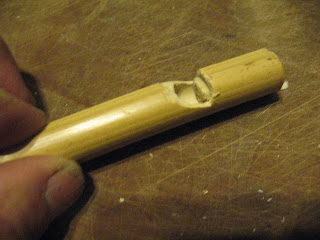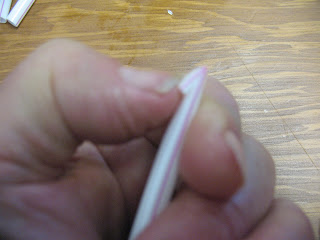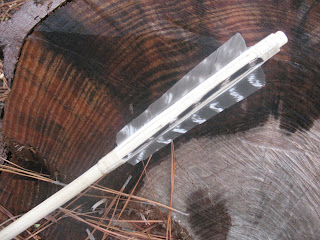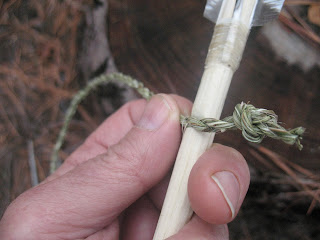I came across an old slingshot the other day, and it made a
little light go off in my head. I had
thought before about making a slingshot that would shoot an arrow, kind of like
an underwater spear gun, and now here was my opportunity. I thought about it a little while, and
decided that the only real change I would have to make to the slingshot would
be to put some king of arrow rest on it to hold the arrow. Pictured below: Materials needed to make an
arrow shooting slingshot.
I dug around in my shop and came up with some heavy gauge
solid wire that looked like it would work for the rest. An old piece of wire coat hanger would
probably have done just as well.
A few minutes work with some needle-nose pliers, and I had
my arrow rest ready to attach. I bent a
little dip in the center of the rest to hold the arrow shaft, and I bent down
the ends of the rest so that I could attack them to the slingshot with a few
good wraps of duct-tape. The main thing
I was concerned with was positioning the arrow rest so that it would be the
same height as the rubber-bands on the sling shot. This would help to aim the arrow more
accurately, and avoid having the arrow leave the slingshot at a downward angle.
Pictured below: top, Wire bent to form arrow rest; middle, arrow rest held in
position on slingshot; bottom, Arrow rest duct-taped into place.
Now all I needed was an arrow. I used a 5/16" dowel rod
about 30" long for the arrow shaft, and glued a metal field point on the
tip. Pictured below: Field tip glued
onto dowel rod arrow shaft.
I made the arrow fletching by cutting a couple of pieces of
duct-tape and pressed the duct tape together on opposite sides of the arrow
shaft. Pictured below: top, first piece of duct tape in place; bottom, Second
piece of duct tape in place.
Then I used scissors
to trim the fletching to shape. I
decided to go with just two fletchings instead of three like on a regular
arrow. Most crossbows that I've seen
just have two fletchings, and I figured that two fletchings would ride over the
arrow rest more smoothly than if the arrows had three fletchings. No need to cut a nock in the arrow because
you are going to pinch it in the leather pocket of the slingshot. Pictured
below: Fletching trimmed to shape.
I took my new arrow shooter out back and did a little field
test. It worked great. Pictured below: Shooting an arrow with my
converted slingshot.
I think with a little practice I should be able to bring
down small game without any problem. I
will definitely stick this little arrow shooter in my bug-out-bag along with a
couple of glue-on broadheads. The
slingshot doesn't take up hardly any room, and it would be a simple matter to
build a hunting arrow in the field.












































